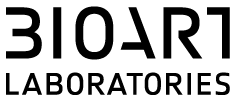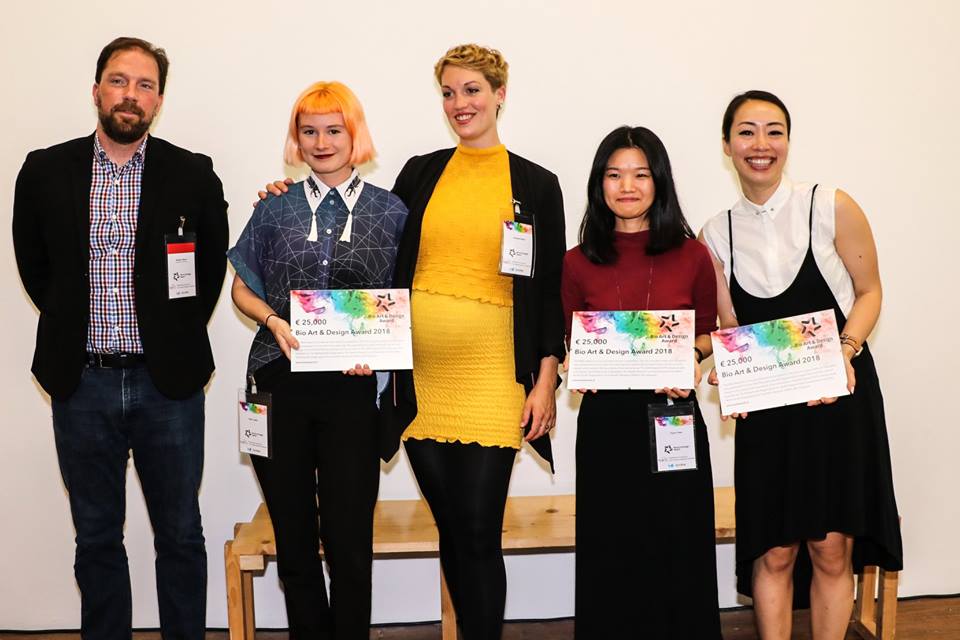On Friday 25 May 2018, bio artists Amanda Baum and Rose Leahy (duo), Yiyun Chen and Ani Liu were the selected winners of the Bio Art & Design Award 2018 (BAD Award). The jury chose these artists and designers from twelve teams of collaborating international artists, designers and scientists. With the prize money of 25,000 euros, the winners will spend the next year realising their bio art project. Each BAD Award project will be realised in close collaboration with a Dutch research institution.
The participants could count on a big crowd for pitching their projects in art centre Stroom Den Haag. The international jury, chaired by William Myers (writer and curator, United States), was impressed by the differences in content and approach of the teams. Myers: ‘The approaches to realise these projects were impressively diverse and ranged from sculpture and theatre to 3D printing and an entirely new visual language of icons. This points to highly meticulous and creative work from the participants and an effort to achieve originality.’ The golden thread running through the presentations was formed by subjects such as defining humans, life in the sea, how artificial intelligence, humans and ecosystems will relate to each other in the future, and the relationship between technology and disease.
The English duo Amanda Baum and Rose Leahy investigate the past, present and future of life on earth from a microbial perspective. In response to the stories of the Anthropocene, Baum and Leahy will use the prize to elaborate the ‘microbiocene’ to show how alternative futures are constructed by weaving worlds with microbes. They will realise the project in collaboration with researchers from NIOZ (Royal Netherlands Institute for Sea Research). The Chinese Yiyun Chen will use the prize to design and construct a horizontal living studio where she will subsequently live and work for a month. With this ‘life in bed’, she will simulate our modern lifestyle at home and the 24-hour culture. She will do this in collaboration with the Department of Nutrition and Movement Sciences NUTRIM at Maastricht University. With her work, Ani Liu from the United States will investigate how technological innovations enable people to redesign themselves. In collaboration with researchers from the Department of Radiology at the AMC Amsterdam, she will use the prize to make a series of artworks that show how technology influences us, with a focus on recognising the relationship between our body as matter and as data. The winning works of art will be exhibited from late November 2018 at MU, centre for visual culture in Eindhoven.
The jury about the winners See the attachment for the jury’s laudations about the three winners of the BAD Award 2018 (English).
About the BAD Award The BAD Award is an annual international competition. Its aim is to allow artists and designers who graduated no more than five years ago to experiment with bio art and design and to push back the boundaries of art and science. The BAD Award 2018 is an initiative of NWO, ZonMw, MU and BioArt Laboratories. The prize forms a stimulus for the rapidly growing group of young creatives who focus in their work on exploring the new possibilities offered by the life sciences. The members of the BAD Award 2018 jury were:
– William Myers, curator and writer (United States/the Netherlands) jury chairperson.
– Manon Parry, assistant professor of Public History, University of Amsterdam (the Netherlands)
– Karen Verschooren, curator and head of Exhibitions at STUK Arts Centre Leuven (Belgium)
– Isaac Monté, artist and former BAD Award winner (Belgium/the Netherlands)
– Han Wösten, Professor of Microbiology, Educational Director Biology and Biosciences Utrecht University (the Netherlands)
– Koert van Mensvoort, artist, philosopher, scientist and founder of Next Nature Network (the Netherlands)



